Description
Recorded live July 2, 2016 Corthell Concert Hall, University of Southern Maine Timothy Burns, conductor Jimmy Doirty, recording enginner Nathan Galves, cover art Fanfare for the Common Man, Aaron Copland (1900 - 1990) The Redwoods, Rossano Galante (b. 1967) Across The Sea Of Grass, Mark Piszczek (b. 1957) Lost Vegas, Michael Daugherty (b. 1954) Viva Mirage Fever First Light, Timothy Burns (b. 1987) Sunrise at Angel’s Gate, Philip Sparke (b. 1951) Fourth Symphony (Yellowstone Portraits), James Barnes (b. 1949) Dawn on the Yellowstone River Pronghorn Scherzo Inspiration Point (Tower Falls) America, the Beautiful, Samuel Augustus Ward (1847 - 1903), arr. Carman Dragon (1914 - 1984)
Piccolo
Nicole J. Rawding
Flute
Karina Carlsson Babcock
Vene Hashimoto
Michelle Rawding
Nicole Rawding
Karen Smith
Oboe
Julia Edwards
Katie Hardy
English Horn
Katie Hardy
Bassoon
Ryan Blanchard
Linda Soares
Chris Szustak
Contrabassoon
Chris Szustak
E-Flat Clarinet
Ben Fox
Clarinet
Sandy Barry
Julie Cross
Ben Fox
Carol Furman
Laura Manduca
Jean Quinn
Ellen Rust
Bass Clarinet
Steven Barter
Libbie Perry Bowder
Contrabass Clarinet
Dalton Ringey
Soprano Saxophone
Cara Kinney
Alto Saxophone
Cara Kinney
Blaise Spath
Tenor Saxophone
Loren Peters
Baritone Saxophone
Jayne Sawtelle
Trumpet
Steve Gagel
Dan Laciano
Tom Kremser
Alex Quinn
Off-Stage Trumpets
Gary Comingore
Vann Guamieri
Max Richardson
Jim Sakofsky
Horn
Connie Plaisted
Aubrey Landsfeld
Paul Thomas
John Wheeler
Trombone
Owen Doane
Justin Leach
Jack Sullivan
Bass Trombone
Tim Bathras
Euphonium
Tim Clement
Adam Goad
Tuba
Nick Allen
Joshua LaChance
String Bass
Joshua DeScherer
Piano
David Delano
Harp
Patrice Lockhart
Timpani
Alex Ouellette
Jordan Huard
Percussion
Libby George
Jordan Huard
Bill Manning
Jenna Nelson
Rusty Quinn
Fanfare for the Common Man, a brief but stirring work, was one of ten fanfares commissioned by conductor Eugene Goossens for the Cincinnati Symphony Orchestra. The year was 1942, and Goossens’ aim was to foster patriotic spirit during World War II. Though the other nine fanfares have dropped from sight, Copland’s remains securely in the active repertoire, doubtless due in part to its all-embracing title, but also because of the nobility of its theme. Three years after its composition, Copland took up the fanfare once more, elaborating it and incorporating it into the finale of his Symphony No. 3.
Aaron Copland was born on November 14, 1900, in Brooklyn, New York, going on to study piano and composition and studying in Europe for some time. He became one of the century’s foremost composers with highly influential music that had a distinctive blend of classical, folk and jazz idioms. Some of Copland’s most prominent pieces included Fanfare for the Common Man, El Salon Mexico and Appalachian Spring, for which he won the Pulitzer. An Oscar-winning writer of film scores as well, Copland died on December 2, 1990.
The Redwoods was commissioned in 1998 by the North Tonawanda High School Band under the direction of Norman Alexander. This work, inspired by the beauty, power and majesty of the Redwoods – the most remarkable of trees – begins with a heroic -romantic trumpet melody accompanied by woodwind arpeggios, punctuated by brass rhythms. After a transition, the opening melody is followed by the rich, lush, main theme which is stated by the horns and woodwinds.
After the main theme has undergone variations in orchestration, a new section follows, with the upper woodwinds playing a second, delicately stated theme reminiscent of a music box. The new theme is heard once more but played in a heroic manner by the trumpets and trombones, in juxtaposition of the original “music box” statement.
The main theme recapitulates in a similar heroic manner, and as each main theme returns it is heard with a change of instrumentation and accompaniment. After the final thematic statement, a brass fanfare brings us to the end of the piece, which culminates in a grand climax.
Rossano Galante (b. 1967, Buffalo, NY) earned a degree in trumpet performance from the State University of New York at Buffalo in 1992. He then was accepted into the film scoring program at the University of Southern California and studied with film composer Jerry Goldsmith. Among Galante’s film credits as composer or orchestrator include Big Fat Liar, Scary Movie 2, The Tuxedo, and Tuesdays With Morrie.
Commissions for his music have come from the Amherst Chamber Orchestra, Hofstra University Symphonic Band, Nebraska Wind Symphony, Syracuse Symphony Youth Orchestra, and West Genesee High School Wind Ensemble.
Across The Sea Of Grass was composed in 2016 for the one hundredth anniversary of the United States National Park Service. After years of living all over the country, Piszczek has recently relocated back to his native state of Florida.
The composer notes, “ Many composers are doing pieces about various national parks for this year’s celebration. Since I’m back in Florida, the Everglades seemed like a logical choice. While some of the mountainous parks out west may have more drama and grandeur, the Everglades have a colorful history and possess a unique and exotic beauty of their own. The park is also facing huge environmental challenges from the introduction of exotic species and encroaching development. I tried to capture both the natural beauty and man made threats to this amazing ecosystem.”
The piece is also incorporates two Seminole Indian folk songs that Pisczcek discovered on recordings from the Smithsonian Institute’s folk music library.
Mark Piszczek (b. 1957) is a native of central Florida where his parents worked in the fledgling space program. A professional performer on both oboe and saxophone, Piszczek has a deep background in both jazz and classical music. He has led his own groups and worked as a studio musician for over thirty years.
Piszczek’s father was a devout fan of classical music and it played daily on the family phonograph. This early exposure to concert music and the presence of highly competent music teachers, instilled a love of music that later turned into a life long passion. The composer cites the music of Karel Husa, Bela Bartok, Hindemith, Miles Davis, Chick Corea and Ralph Towner as key influences in his early musical development.
Piszczek studied oboe at the University of South Florida and the University of Wisconsin, Platteville. After years of performing professionally as a jazz artist, he decided to return to his classical roots and received a master’s degree in composition at the University of Southern Maine in Portland, where he studied with composers, Elliott Schwartz and Dan Sonenberg. He has written hundreds of jazz compositions, a woodwind quintet, string quartet, four works for chamber orchestra, a brass quintet, a trio for clarinet, viola and piano, a symphony for winds and percussion, a new work for symphony orchestra, a trio for flute, clarinet, bassoon and piano based on native American folk songs and a trio for woodwinds. 2011 saw the international release of his solo jazz album, Bamboo Philharmonic, on Blue Bamboo Music.He now resides in Winter Park FL. where he is the creative director for The Blue Bamboo Center For The Arts.
Lost Vegas (2011) was commissioned by the University of Michigan Symphony Band, Michael Haithcock, conductor, and the University of Miami Wind Ensemble, Gary Green, conductor. Lost Vegas is my musical homage to bygone days in the city of Las Vegas, Nevada. I recall the enormous neon signs punctuating the “Strip,” promoting casinos and hotels ruled by the underworld, and the massive marquees trumpeting performances by pop music legends such as Frank Sinatra and Elvis. Performed without pause, Lost Vegas is divided into three movements.
The first movement, Viva, is inspired by the seminal book Learning from Las Vegas (1968–72), by modernist architects Robert Venturi and Denise Scott Brown, who likened the symbolism of the Vegas “Strip” to the Piazza Navona in Rome. The music in Viva unfolds as catchy musical riffs are layered and phased in various polytonal guises and orchestrations.
Mirage, the second movement, was inspired by my recent drive through the forbidding desert of Death Valley. Located 88 miles west of Las Vegas, Death Valley is one the lowest, driest, and hottest locations in North America. A serpentine oboe solo, later doubled by trumpets with harmon mutes, is surrounded by steamy brass chords and twisting counter-melodies played by winds and percussion keyboards. Accompanied by an ominous bass drum, the music in Mirage appears and disappears, like an optical illusion one might encounter in the scorching desert, or driving from the pitch-black darkness of Death Valley in the dead of night toward the bright lights of Las Vegas.
The final movement, Fever, is a swinging tribute to an earlier epoch, when legendary entertainers such as Elvis, Peggy Lee, Bobby Darin, Stan Kenton, and Frank Sinatra’s “Rat Pack” performed in intimate and swanky showrooms of the Sands, Tropicana, and Flamingo hotels.
Torn down long ago, the original neon signs, casinos and hotels of the Vegas “Strip” have been replaced by impersonal, corporate glass towers. The cozy nightclubs, where the “Rat Pack” once performed edgy material, have been replaced by large arenas, where commercialized family entertainment is now presented. My composition for symphony band is a trip down memory lane to an adventurous and vibrant Vegas that once was and returns, if only for a moment, in Lost Vegas.
– Michael Daugherty
GRAMMY® award-winning composer Michael Daugherty (b. 1954) is one of the most commissioned, performed, and recorded composers on the American concert music scene today. Daugherty first came to international attention when the Baltimore Symphony Orchestra, conducted by David Zinman, performed his Metropolis Symphony at Carnegie Hall in 1994. Since that time, Daugherty’s music has entered the orchestral, band and chamber music repertory and made him, according to the League of American Orchestras, one of the ten most performed American composers. In 2011, the Nashville Symphony’s Naxos recording of Daugherty’s Metropolis Symphony and Deus ex Machina was honored with three GRAMMY® Awards, including Best Classical Contemporary Composition.
Daugherty studied music composition at the University of North Texas (1972-76), the Manhattan School of Music (1976-78), and computer music at Pierre Boulez’s IRCAM in Paris (1979-80). Daugherty received his doctorate from Yale University in 1986 where his teachers included Jacob Druckman, Earle Brown, Roger Reynolds, and Bernard Rands. During this time, he also collaborated with jazz arranger Gil Evans in New York, and pursued further studies with composer György Ligeti in Hamburg, Germany (1982-84). After teaching music composition from 1986-90 at the Oberlin Conservatory of Music, Daugherty joined the School of Music at the University of Michigan (Ann Arbor) in 1991, where he is Professor of Composition and mentor to many of today’s most talented young composers. Daugherty has been the composer-in-Residence with the Louisville Symphony Orchestra (2000), Detroit Symphony Orchestra (1999-2003), Colorado Symphony Orchestra (2001-02), Cabrillo Festival of Contemporary Music (2001-04, 2006-11), Westshore Symphony Orchestra (2005-06), Eugene Symphony (2006), the Henry Mancini Summer Institute (2006), the Music from Angel Fire Chamber Music Festival (2006), Pacific Symphony (2010-11), Chattanooga Symphony Orchestra (2012) and New Century Orchestra (2013).
Daugherty has received numerous awards, distinctions, and fellowships for his music, these include: a Fulbright Fellowship (1977), the Kennedy Center Friedheim Award (1989) for his compositions Snap! and Blue Like an Orange, the Goddard Lieberson Fellowship from the American Endowment for the Arts (1992) and the Guggenheim Foundation (1996), and the Stoeger Prize from the Chamber Music Society of Lincoln Center (2000). In 2005 Daugherty received the Lancaster Symphony Orchestra Composer’s Award, and in 2007, the Delaware Symphony Orchestra selected Daugherty as the winner of the A.I. DuPont Award. Also in 2007, Daugherty was named “Outstanding Classical Composer” at the Detroit Music Awards and received the American Bandmasters Association Ostwald Award for his composition Raise the Roof for Timpani and Symphonic Band. His recordings can be heard on the Albany, Argo, Delos, Equilibrium, Klavier, Naxos and Nonesuch labels.
First Light was written in celebration of the centennial of the U.S. National Park Service. Tim’s native Maine boasts the easternmost park in the U.S. and many days Cadillac Mountain, the highest peak in Acadia National Park, sees the first rays of sunlight in the entire country.
All the letters of the word Acadia occur in our musical scale with the exception of ‘I’. Musicians use the Roman numeral I when analyzing and composing to designate ‘do’ or the key of the piece – in this case, C. Thus the name of the park provided all the material needed to write this short fanfare – A C A D C A.
An off-stage trumpet announces the coming of the sun, quietly at first, and then more earnestly. As the first beams of light draw near, the color changes and a burst of energy heralds the new day before fading away into the sunlight.
Maine-based composer and conductor Timothy Burns has been actively composing music since he was 9. His works are frequently performed throughout northern New England by ensembles such as the Southern Maine Symphony Orchestra, Casco Bay Wind Symphony, and the University of Southern Maine Wind Ensemble. In 2009 Tim placed third in the Walter Beeler Memorial Composition with The Cask of Amontillado, and relieved an honorable mention it the Craig and Janet Swan Composer Prize for his orchestral tone poem Of Rocks. Recently, the Da Capo Chamber Players played his piece Night Visions, and his string quartet (and so to dark) was performed by ETHEL.
As a conductor, Tim is often seen with the Casco Bay Wind Symphony, the Portland Youth Ensembles, and in his car where he leads the world’s greatest orchestra while waiting at stop lights. In 2015, Tim founded the 207 Wind Orchestra, a group dedicated to playing the highest quality literature written for winds, where he serves as music director.
As a performer, Tim is an active horn player and percussionist. Recently he’s begun to study theremin and has always enjoyed playing the recorder. Tim holds degrees in music education (BA) and composition (MM) from the University of Southern Maine. His primary teachers have been Dr. Daniel Sonenberg and Dr. Peter Martin.
Tim currently lives in Old Orchard Beach, Maine where he enjoys playing Skyrim and watching Survivor with his cat Percy.
Sunrise at Angel’s Gate was commissioned by Colonel Finley Hamilton, conductor of the United States Army Field Band, and first performed by them in March 2001.
Philip Sparke provides the following composer’s notes:- “In October 1999, I was privileged to be invited to Flagstaff, Arizona, to take part in the centenary celebrations of Northern Arizona University. The University is two hours drive from the Grand Canyon, so a visit was compulsory!
It’s really not possible to describe this amazing natural phenomenon – it’s just too big. You can’t even photograph it effectively but it undoubtedly leaves a lasting impression on anyone who visits it.
Sunrise and sunset are the best times to view the Canyon, as a sun low in the sky casts shadows that give depth and form to the vast panorama. Angel’s Gate is one of the many named rock formations on the northern side of the Canyon and in this piece, I have tried to depict the sights and sounds of dawn there, birdsong in the early morning sky and the gradual revelation of the Canyon itself as sunlight reaches into its rocky depths.
The faster central section depicts the arrival of the tourist buses, which run back and forth along the Southern Rim, and towards the end of the piece, to the sound of a tolling bell, we are reminded of the dangers that the beauty of the Grand Canyon so cleverly hides.”
Philip Sparke (b. 1951, London) studied composition, trumpet and piano at the Royal College of Music, where he gained an ARCM. It was at the College that his interest in bands arose. He played in the College wind orchestra and also formed a brass band among the students, writing several works for both ensembles.
At that time, his first published works appeared – Concert Prelude (brass band) and Gaudium (wind band). A growing interest in his music led to several commissions, his first major one being for the Centennial Brass Band Championships in New Zealand – The Land of the Long White Cloud.’ Further commissions followed from individual bands, various band associations and the BBC, for whom he three times won the EBU New Music for Band Competition (with Slipstream, Skyrider and Orient Express). He has written for brass band championships in New Zealand, Switzerland, Holland, Australia and the UK, including three times for the National Finals at the Royal Albert Hall, and his test pieces are constantly in use wherever brass bands can be found.
A close association with banding in Japan led to a commission (Celebration) from and eventual recording of his music with the Tokyo Kosei Wind Orchestra. This opened the door worldwide to his wind band music and led to several commissions, particularly from the United States. In 1996 the U.S. Air Force Band commissioned and recorded Dance Movements, which won the prestigious Sudler Prize in 1997. In 2005 Music of the Spheres won the National Band Association/William D. Revelli Memorial Band Composition Contest.
His conducting and adjudicating activities have taken him to most European countries, Scandinavia, Australia, New Zealand, Japan and the USA. He runs his own publishing company, Anglo Music Press, which he formed in May 2000. In September 2000 he was awarded the Iles Medal of the Worshipful Company of Musicians for his services to brass bands.
Portraying the beauty of nature with music is certainly not a new idea. Vivaldi‘s cycle of violin concertos entitled The Seasons, Beethoven‘s Pastorale Symphony, Smetana‘s tone poem The Moldau, and Respighi‘s The Pines of Rome are but a few outstanding examples of this procedure.
Composed in the spring and summer of 1999, James Barnes‘ Fourth Symphony (Yellowstone Portraits) is a new contribution to the longstanding symphonic tradition of program music. Commissioned by the Kansas City Youth Symphony, the band version was completed in the spring and summer of 2001.
The initial moments of the first movement, Dawn on the Yellowstone River, invoke the sound of river water and the awakening of birds. It is intended to portray the stillness and calm of nature in the early morning; from the first scant, shadowy rays of daybreak to the moment when the sun rises above the crest of the mountains and glistens in all its glory upon the waters of the magnificent Yellowstone River.
The second movement, Pronghorn Scherzo, describes the humorous and chaotic scrambling of an alerted herd of pronghorns. The first sounds in this movement signify the alert, when all the pronghorns raise their head to what they perceive to be the sound or appearance of danger. The composer has marked this movement “Lickety Split,” and that is exactly what the animals begin to do, running helter-skelter in all directions, seemingly at the speed of light. This general panic progresses to a great climax, when the herd finally follows its leader over the top of a hill. However, one confused and inexperienced baby antelope remains in sight. He soon realizes that he should follow his mother over the hill. With the blink of an eye, he is gone, and so is the second movement.
The composer describes the third movement, Inspiration Point (Tower Falls), as “outdoor music; music to take one‘s breath away.” Inspiration Point begins with a tremendous fanfare by the trumpets that leads to the initial statement of the main theme by the unison horns, a melody that was first heard in the opening movement of Fourth Symphony. The music is intended to portray the awesome beauty of the greatest waterfall in Yellowstone Park, and its fascinating natural setting at the end of a great canyon. After moments of contemplation and admiration, the music begins to build to a gigantic climax, evoking the immense power and timelessness of nature which is so evident when viewing this seemingly endless journey of water.
James Barnes (b. 1949, Hobart, Oklahoma) is a member of both the History and Theory-Composition faculties at the University of Kansas, teaches orchestration, arranging and composition courses, and wind band history and repertoire courses. At KU, he served as an Assistant, and later, as Associate Director of Bands for 27 years.
His numerous publications for concert band and orchestra are extensively performed at Tanglewood, Boston Symphony Hall, Lincoln Center, Carnegie Hall and the Kennedy Center in Washington, DC.
Barnes has twice received the coveted American Bandmasters Association Ostwald Award for outstanding contemporary wind band music. He has been the recipient of numerous ASCAP Awards for composers of serious music, the Kappa Kappa Psi Distinguished Service to Music Medal, the Bohumil Makovsky Award for Outstanding College Band Conductors, along with numerous other honors and grants. HeHas recorded three commercial compact discs of his music with the world famous Tokyo Kosei Wind Orchestra. More recently, he completed a CD of his works with the Koninklijke Militaire Kapel (The Queen’s Royal Military Band) in Holland. He has also been commissioned to compose works for all five of the major military bands in Washington, DC. A recent CD by the United States Air Force Band features his Third Symphony.
Mr. Barnes has traveled extensively as a guest composer, conductor, and lecturer throughout the United States, Europe, Australia, Japan and Taiwan. He is a member of the American Society of Composers, Authors, and Publishers (ASCAP), the American Bandmasters Association and numerous other professional organizations and societies. Since 1984, his music has been published exclusively by Southern Music Company of San Antonio, Texas.
The lyrics to America, The Beautiful were written by American songwriter Katharine Lee Bates (1859 – 1929), an English teacher, during a 1893 summer in Colorado Springs. She and other teachers hired a wagon to ascend nearby Pikes Peak; they had to take mules to reach the top. Though tired from the trip, the view from the top evoked strong emotions she jotted down in a notebook. She recalled: “It was then and there, as I was looking out over the sea-like expanse of fertile country spreading away so far under those ample skies, that the opening lines of the hymn floated into my mind.” The words first appeared in print on July 4, 1895, in The Congregationalist, and attracted a great amount of attention as people tried to match the words to music. Bates “…rewrote it, trying to make the phraseology more simple and direct.” The revision was printed in 1904 and was quickly applied to Samuel A. Ward’s hymn Materna.
Carmen Dragon (1914 – 1984) was born in Antioch, California, and was very active as a conductor, composer of movie scores, and arranger. His Hollywood Bowl Symphony Orchestra was broadcast to western U.S. elementary schools from 1928 through the 1970s. Dragon’s arrangement of America, The Beautiful is one of his most popular. While it may invoke a sense of Hollywood, the orchestration plays with rhythm and dynamics in a way that accentuates the patriotic emotions attached to this music.
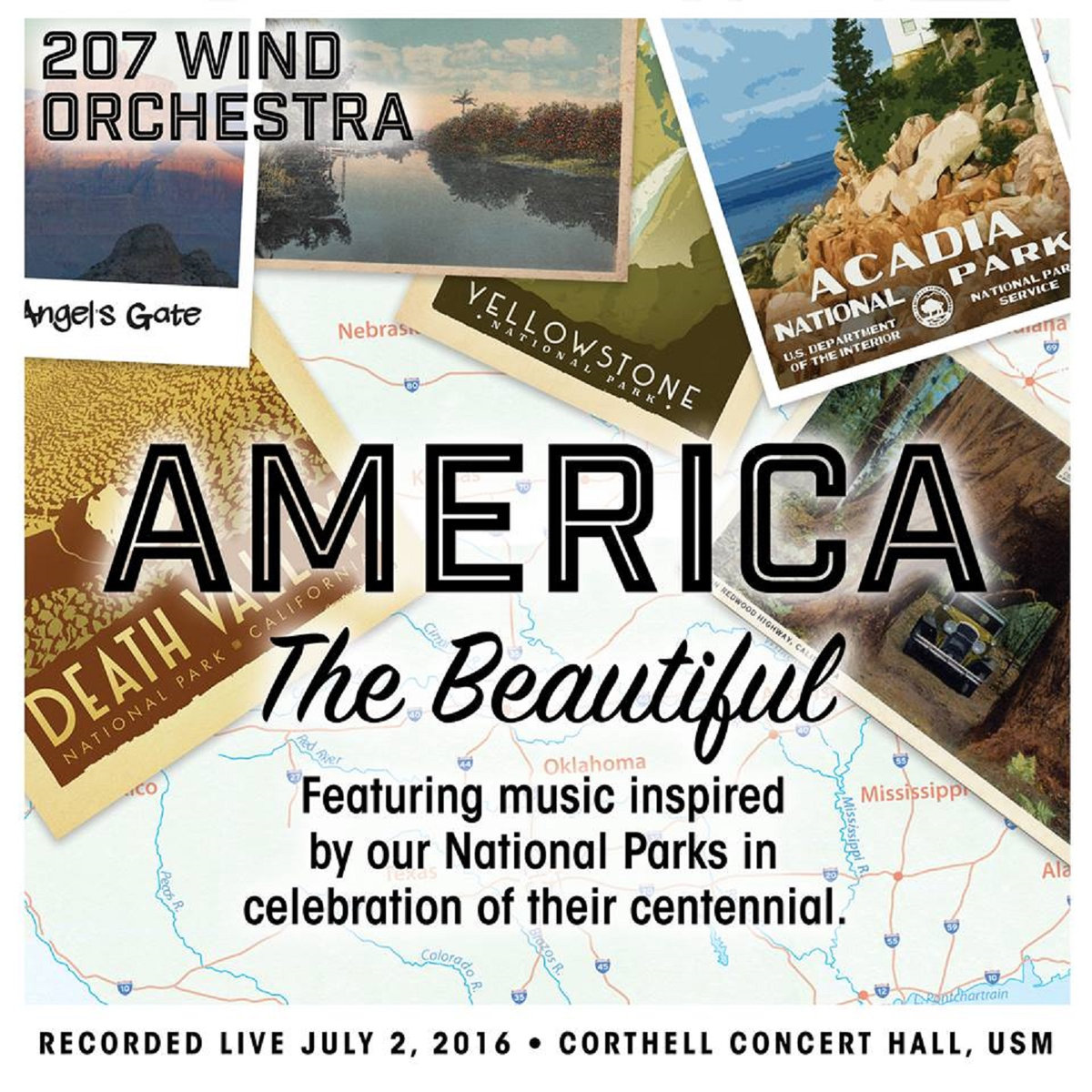
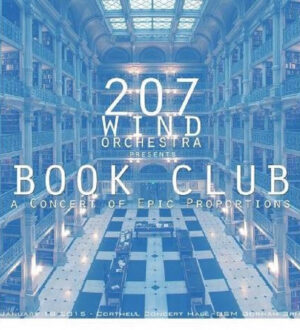
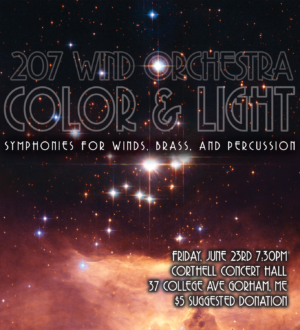
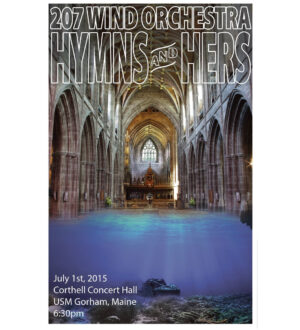
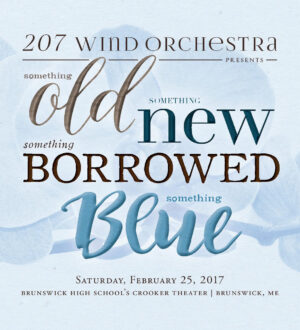
Reviews
There are no reviews yet.